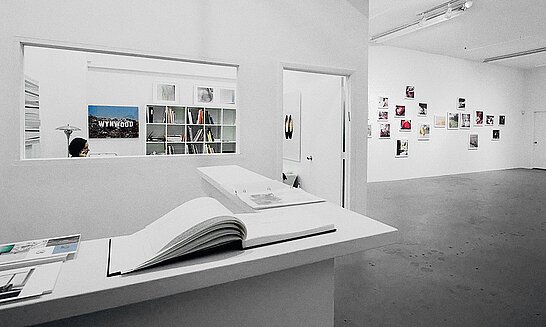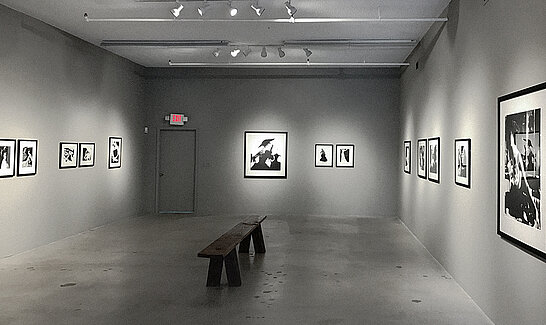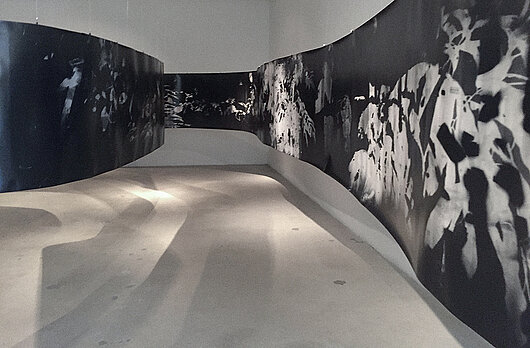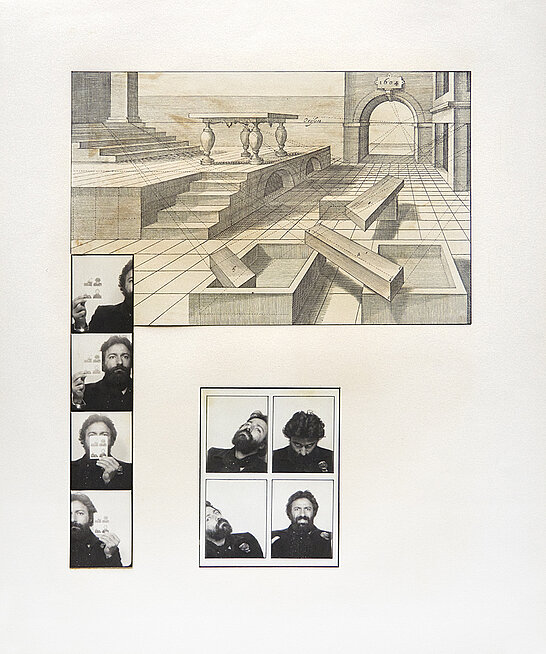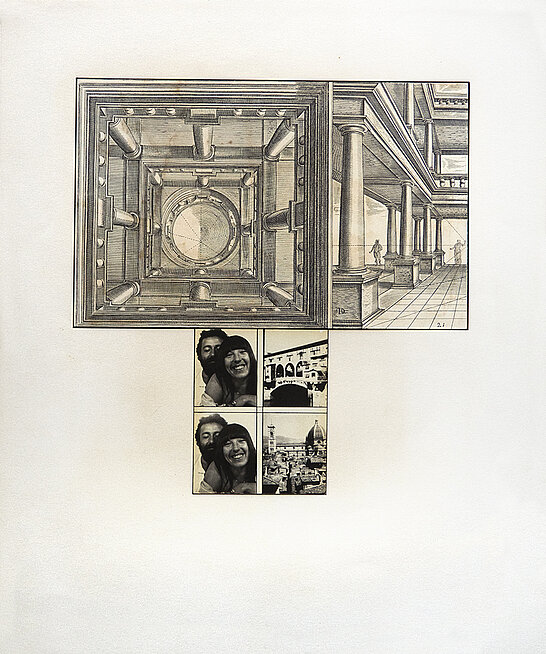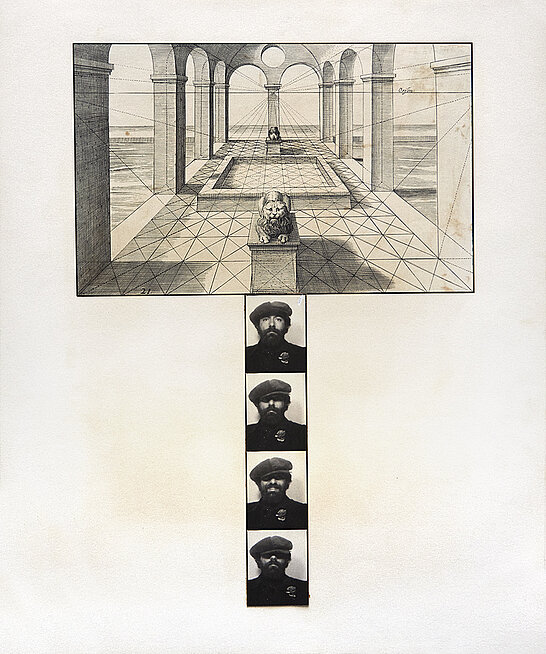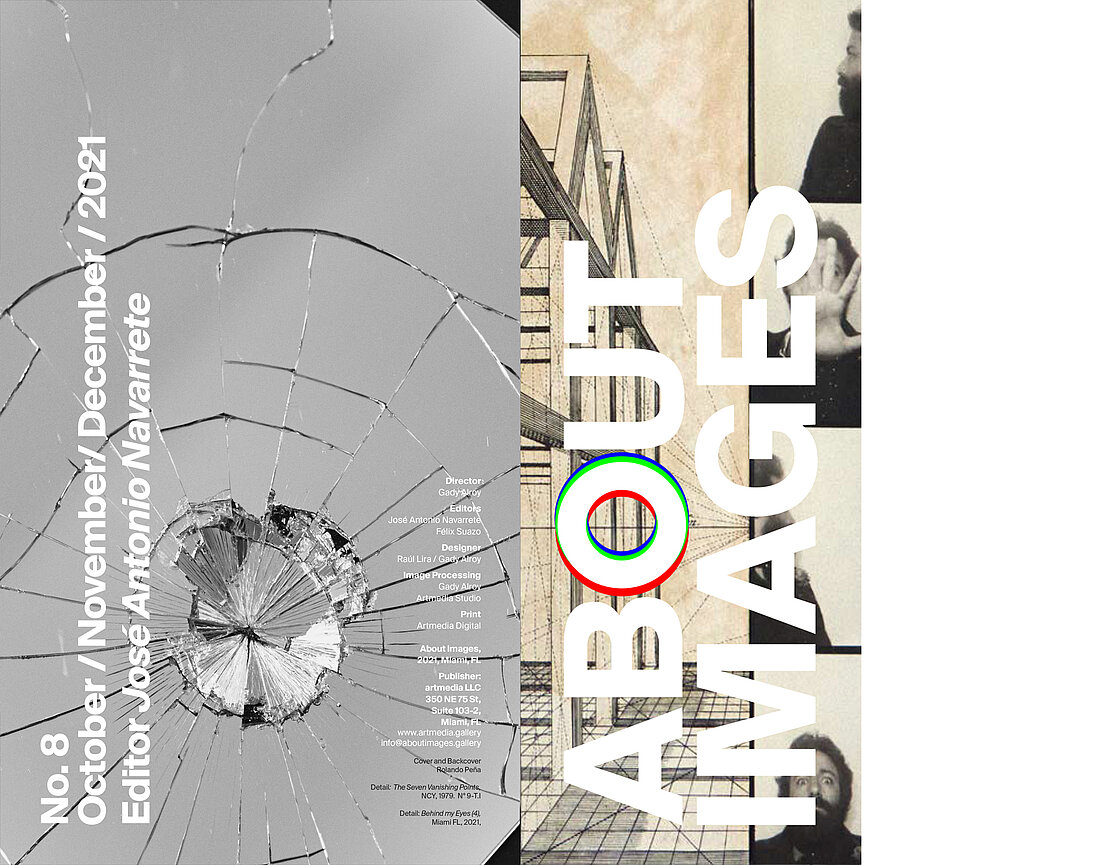
Editorial
From its origins, photography has been the object of philosophical and critical approaches. It was invented in the West, almost in the middle of the 19th century: a time of rising theoretical production and scientistic thought marked by the dominant positivism. By then, it was a task to elaborate a repertoire of concepts to define the particularities of the photographic device and its products, assuming the character of photography as a new image-producing tool based on physical-chemical procedures. Although they were obliged to be constituted as propositions of a historical-cultural reading, these concepts usually aspired to be universal and timeless: non-contextual and ahistorical. They integrated what can be considered the foundational discursive archive of the medium, whose expansion and growth reach the present.
Even in its very genesis, this archive was never a place for the harmony of criteria. It couldn’t have been, given the speed with which, in the two initial decades of its configuration—the fifties and sixties of the 19th century—the thinking on photography diversified. Two early examples illustrate the above statement well. In 1844, the English inventor William Henri Fox Talbot (1800-1877), in his book The Pencil of Nature, identified the images produced with the photographic camera as photogenic drawings made by the hand of nature. Only seven years later, in 1851, in the French magazine La Lumière, the journalist and art critic Francis Wey (1812-1882) defended the idea that photography was a medium with which one could exercise the interpretation of the photographed object or subject and, consequently, manifest the individuality.
At present, theoretical research on photography has spread worldwide, becoming part of international academic work. New notions try to displace others that, in their turn, tried and sometimes succeeded in doing the same with those that preceded them. In any case, in the face of this proliferation of theoretical reflections, it is still worth asking ourselves how much history and context have influenced the ways of thinking about photography.
1- William Henri Fox Talbot. The Pencil of Nature. London: Longman, Brown, Green and Longmans, 1844.
2- Francis Wey. “De l’influence de l’héliographie sur les beaux-arts.” La Lumière. Beaux-Arts - Héliographie - Sciences. Paris: Société Héliographique, #1, 9 Février, 1851, pp. 2-5; #2, 16 Février, 1851, pp. 6-7.
By José Antonio Navarrete
[I]n general, my work is less about expanding the possibilities of photography than about re-investing it with a truer perception of things by returning to a simple method, one that photography has had from the beginning of its existence… For I do believe that in photographs like those of the nineteenth-century English photography Thomas Annan or Eugene Atget, you can read the motivation of the person who made the image in them; the psychological, emotional or intellectual scaffolding that the person saw in the environment.
Thomas Struth
Taken from: Johnson, B. Photography Speaks: 150 Photographers on their art. Norfolk, VA: Aperture Foundation / The Chrysler Museum, 2004, p. 310.
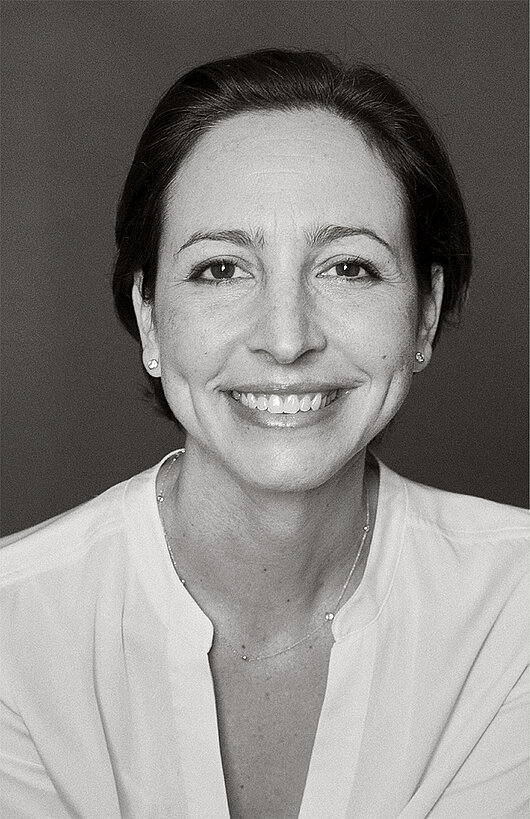
Interview with Dina Mitrani
By Félix Suazo
So-Min Kang, Dina Mitrani, Miami, 2022
Gallery owner, art advisor, and curator Dina Mitrani received a BA in the History of Art from the University of Michigan and a MA from Hunter College in New York. She began her career at Christie’s Auction House and two Latin American art galleries in New York City in the 90s.
On November 2008, she opened her gallery in Miami, specializing in international contemporary photography, representing emerging and mid-career artists. Previous to opening her gallery, Dina was a curator at The Art Museum at FIU, where she organized photography exhibitions from the Margulies Collection and professor Bill Maguire’s photography.
Dina has served on the Miami Art Dealers Association and History Miami Center of Photography board of directors. She has juried numerous international photography competitions and has been a portfolio reviewer at festivals such as Photolucida, Photonola, Medium, Fotofest, and Miami’s Wopha. She has also been the art consultant for Finvarb Companies, curating the art collections for the Hyatt South Beach and several Marriott hotels in South Florida.
Félix Suazo
What motivated you to create an exhibition space dedicated to art photography in Miami? How were the beginnings?
Dina Mitrani
When I arrived in New York City after college in 1993, I was hired by Christie’s Auction House in the Latin American Client Services department which was newly established by Alberto Barral. I had access to many catalogs of art sales, and the ones I brought home were the photography catalogs. After a few years, I was thrilled to get an opportunity to work at Throckmorton Fine Art, curating photography exhibitions for Latin American artists. At Throckmorton, I handled photographs by Manuel Álvarez Bravo, Tina Modotti, Gisèle Freund, Marta María Pérez Bravo, Mario Algaze, Tatiana Parcero, and many other trailblazing photographers. During those years, the market for fine art photography was booming, and it was exciting to be watching it happen firsthand. My love of the photographic medium and curating exhibitions was solidified during these years.
Back in Miami, just after my daughters were born, I opened a gallery in my parents’ former clothing factory in Wynwood. Miami’s arts and culture scene was slowly evolving during these years, but there were no galleries devoted exclusively to photography. When I opened the gallery in 2008, I was happy to dedicate my work to what I loved and provide our city with a place to engage and learn about the photographic arts. Though 2008 was a difficult time in the financial world, it was the right time in my personal life, and I was determined to start small and slowly build the project. The majority of the seven artists included in the inaugural exhibition are still artists I represent today. After a few years, I was delightfully receiving visits from important museum curators from across the country. Also, I felt true fulfillment with the community’s response, the students, and the young collectors of photography.
FS
What criteria govern your selection of artists and works for the gallery?
DM
I usually follow my intuition and my emotional response to the work. I also really value “clicking” with the artist. I lean towards conceptual and narrative works that tell a compelling story most of the time. I also really enjoy showing contemporary photographs made with historical processes and those altered with mixed media.
FS
What changes have you noticed since then in the panorama of local photography?
DM
The photographic world has changed dramatically in the last 20 years. On a local level, I am grateful that there are other photographic galleries like Art Media as well as a much larger awareness about fine art photography.
The emergence of digital image-making, the iPhone, and NFTs, has drastically changed how the world looks at photographs. We see more photographic images today on our handheld devices than ever before. Though I find this fascinating, I’m very old-school in my thinking. I really do believe that nothing can replace the experience of walking into a gallery or a museum and spending some time with a physical work of art, in all its dimensions, and allowing it to have the time to touch your soul. My gallery has always been a resource for students and young collectors and is a very open and engaging place to be curious and learn about the photographic arts. There is still so much I’d like to do in our growing city, and I’m excited to continue on this journey, along with my sister Rhonda, who is a filmmaker and video artist. We will be opening a center for photography, film, and video art for exhibitions, lectures, and workshops. It will also include a library for research, study, and lounging (graciously donated by the legendary Peggy Levison Nolan)! We will be moving to the Little River area of Miami, on 73rd Street and North Miami Avenue. I’m very excited to welcome soon old friends and patrons as well as new students, collectors, and friends!
Life in Perspective
Rolando Peña’s Collages
By José Antonio Navarrete
In 1604-05, the Dutch architect, engraver, and painter Hans Vredeman de Vries (1527-1606) published his book Perspective simultaneously in French, Latin, Dutch, and German. From the XVII-century onwards, the book became a scholarly manual for its engraved illustrations of multiple points of perspective. It was helpful for the construction of visual representations according to the paradigm of imitation of nature that dominated on them from the Renaissance until the late XIX-century. Seen from this angle, Perspective is a repository of pre-modern artistic discourses. Therefore, it served the goals of legitimizing art as a specific social practice.
With a reprint of this book on his hands, Rolando Peña (Caracas, 1942) decided, in the late 1970s of the XX-century, to create a series of collages in which he joined in each work a print of Vredeman de Vries with his own photo-booth images. These instantaneous, single-copy photographs that Peña had begun to make as a private performance at the beginning of the 1960s already had an extensive number in the artist’s archive. The series of collages was exhibited in 1979 at the New York gallery Cayman with the title The Seven Vanishing Points and accompanied by a performance by the artist. Many years later, from the last decade until today, Peña has developed new proposals around the same theme. The Seven Vanishing Points has become a matrix concept susceptible to being prolonged in various visual events within the artist’s long artistic career.
Peña’s informal photographs, alien to the criteria elaborated for art photography in Modernism, demonstrated a signaling intention in their sophisticated visual relationship with old engravings. They staged an art conceptual concern that was central at the time of its realization but that reaches the present. It can be formulated as the purpose of introducing life directly, without mediation, without symbolic pretensions —”just as it is”— in the space of artistic representation. Perhaps, for this reason, the collages of The Seven Vanishing Points still seem to be a daring and sensitive proposal for rewriting art history and practice.
Memories
1840
On January 15, the newspaper El Cosmopolita, from Mexico City, informs about the daguerreotype shots made by French printer Louis Prélier, in the port city of Veracruz, after arriving from France on December 3.
1853
African American daguerreotyper Augustus Washington (1821-1875) immigrates to Liberia, in Africa, to escape the brutal conditions under which blacks live in the United States.
1871
After being an amateur photographer who assists Felice Beato (1832-1909) in his studio in Yokohama, Japan, Baron Raimund von Stillfried-Ratenicz (Chomutov, Czechia, 1839 - Vienna, Austria, 1911) opens his own and becomes Beato’s main competitor.
1896
Only four years after founded the Linked Ring Brotherhood, a British organization devoted to pictorialist photography, their members’ works arrive in New Zealand to promote the new aesthetic.
1906
In January, the first issue of Graphos Ilustrado, a monthly magazine specialized in photography and oriented to both professionals and amateurs photographers, is launched in Madrid.
1916
From March 13 to April 3, the New Yorker Paul Strand (1890-1976) presents his first solo exhibition, Photographs of New York and Other Places, at the Little Galleries of the Photo-Secession, better known as 291 after its address on Fifth Avenue, New York.
1921
On August 24, in Argentina, Alejandro C. del Conte (1897-1952) publishes the first issue of Correo Fotográfico Sudamericano, a magazine dedicated to educate professional and amateur photographers in technical, aesthetic, and cultural photographic topics.
1935
Luo Bonian (1911-2002), an amateur photographer active in Shanghai and its vicinity in the 1930s and 40s, publishes two series of abstract photographic collages in Shidai (Epoch) magazine, issue number eleven.
1948
In Saida, Lebanon, Hashem El Madani (1928-2017) opens his Studio Sheherazade, where he portrays for more than three decades the transformation of cultural habits in a region of the country through the poses, attitudes, clothes, and facial expressions of people.
1958
Two years before the Congo independence from Belgium, with editions in Dutch, French, and Spanish, is published the pro-colonial photobook Familie album, that gathers photographs taken in Congo by photographers J. Costa, A. Da Cruz, H. Goldstein, C. Lamote, E. Lebied, J. Makula, H. Philips, R.P. van den Heuvel, J.M. Vrijdag (Congo) and Roland d’Ursel (Belgium) accompanied by a text by Robert Bertaix.
1965
7 Men Photo Exhibition is presented from March 5 to 7 at the Victoria Memorial Hall, in Singapore, with the inclusion of Lee Lim, Mum Chor Koon, Tan Boon Yean, Wang Su Fah, Pen Seng Wu, Yam Pak Nin and Yip Cheong Fung, all members of The Photographic Society of Singapore and fellows of the Royal Photographic Society of Great Britain.
1979
As his owner and director, Cuban-American photographer Mario Algaze opens Gallery Exposures in Coral Gables, city of the Miami Dade County, that was presumably the first exhibit and commercial gallery devoted to photography in Florida.
1988
In London, Autograph ABP (Association of Black Photographers) is founded to support black photographic practices and launches an ambitious program of exhibitions, publications and events.
2007
The Photographic Studio and Laboratory of French politician, businessman and amateur photographer Fortuné Joseph Petiot-Groffier (1788-1855), situated in Chalon-sur-Saône, Eastern France, makes news for being the oldest in the world that comes to the present completely preserved after actively functioning from 1840 to 1855.
2021
On April 21, the auction house Sotheby’s New York sells a highly important collection comprising about 190 photographs by William Henry Fox Talbot (1800-1877), inventor of the calotype, some of the earliest ones ever made, including many never seen before.

Louis Prélier
Port of Veracruz, Mexico
December, 1839
Daguerreotype
6 1/2 × 8 7/16 in. (16.5 × 21.5 cm)
George Eastman Museum Collection
News

1 View in Perspective
Harvest Project
Pinecrest Garden, Miami, Florida
October 23, 2021- February 28, 2022
This exhibition presents twelve local artists who approach the photographic medium from different perspectives. Among them, Silvia Lizama, Consuelo Castañeda, Willy Castellanos, G.A. Jakubovics and Peggy Levinson Nolan. Curated by Harvest Project, this initiative was made possible thanks to the collaboration of HARTvest Project, Dina Mitrani Gallery and Art Media Gallery, aluna Art Foundation and The Fuentes Angarita Foundation.
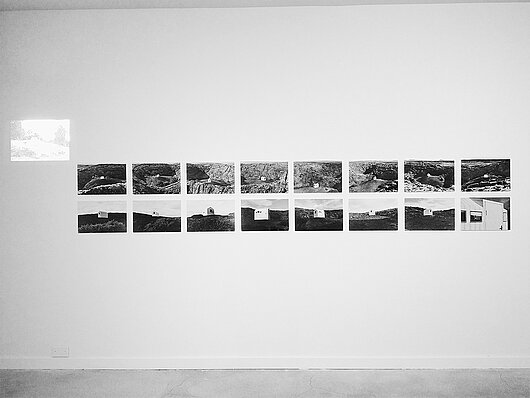
2 Hreinn Fridfinnsson: For the Time Being
PMuseum of Art and Design at MDC, Miami
November 7, 2021 - May 1, 2022
Hreinn Fridfinnsson was born in 1943 in Baer Dölum, Iceland. He makes “minimal gestures to transform everyday materials into poetic, allusive, and revelatory works of art.” In several of his projects, he uses photography as a self-referential medium. Curated by Rina Carvajal, MOAD’s Executive Director and Chief Curator, with the assistance of Isabela Villanueva, Consulting Assistant Curator, the exhibition brings together a wide selection of works, including installations, videos, photographs, objects, and documentary material.
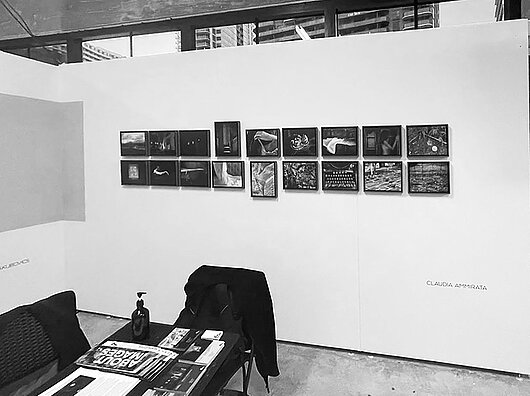
3 Photography at Miami Art Week
Miami
December 1-5, 2021
With the return of the eagerly awaited Miami Art Week, some art fairs gave an important space to artistic photography. Pinta Miami was one of them. The Solo Projects of Ruby Rumié, from the Nohra Haime Gallery in New York, and EnFoco from GalleryLabs in New Haven, CT, were presented there. Within the same fair, ArtMedia Gallery exhibited the works of Mari Carmen Orizondo, G.A. Jakubovics, and Claudia Ammirata. Finally, Pinta Miami dedicated a Live Talk to About Images newsletter #7, with reflective interventions by José Antonio Navarrete, Gady Alroy, Raúl Lira, and Félix Suazo.
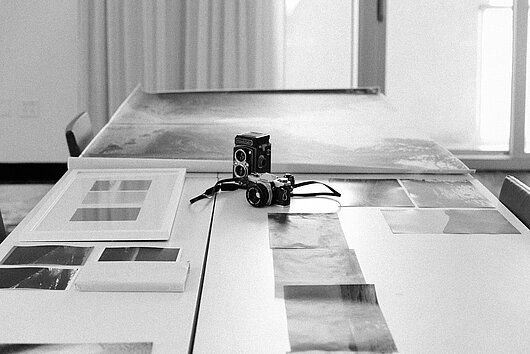
4 Women, Photography, and Feminisms
Congress
Pérez Art Museum Miami
November 18-19, 2021
Women Photographers International Archive (WOPHA) —a nonprofit organization dedicated to research, promoting, supporting, and educating on the role of those who identify as women and non-binary in photography— organized this Congress. It sought to create a critical space for photography by bringing together worldwide organizations of women photographers, plus art historians, theorists, and curators. The event joined hundreds of in-person attendees and online spectators around the world.


